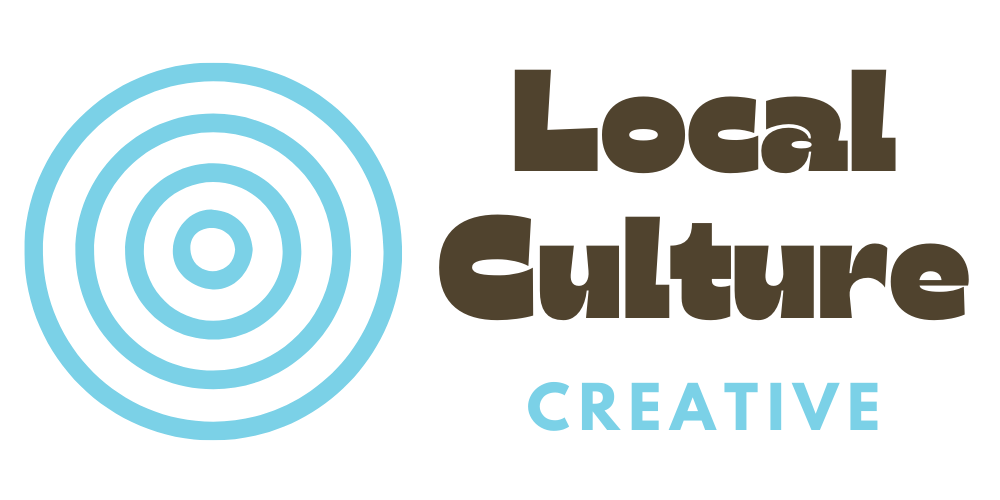The initial press release for John Sims' 13 Flag Funerals project didn't attract much notice outside the art world : "To mark the 150th anniversary of the end of Civil War, multi-media conceptual artist John Sims will organize a thirteen-state funeral for the Confederate flag on Memorial Day, May 25, 2015. The services are intended to invite a moment of reflection, remembrance and closure." (*Note: Sims contacted the writer after publication to say that he strongly disagrees with this assessment. Please see the end of the story for his take.) Sarasota-based Sims is known for his artistic investigations into the Confederate flag as symbol of racism. His installation "The Proper Way to Hang a Confederate Flag" hung the Stars and Bars from a noose, a pretty straightforward comment on lynching in the South, and his Recoloration Proclamation series reworked the flags of many nations in a "discourse on the psychological complexities of symbol warfare." (The Confederate flag was recolored in the black, green and yellow of the Jamaican flag.)
However, when the Florida event was announced, it, of the 13 planned burials, seemed most to catch fire in the public consciousness. What was essentially a performance art project – in each of the 13 Confederate states, a funeral would be held for the flag, complete with music and a poet to give a eulogy – was seen as a purely political statement, and commentary exploded in the local and national media, as well as across the blogosphere.
On Memorial Day, in the Greenwood Urban Wetlands, the ashes of a burned Confederate flag were scattered in the water. Local artist and writer Julian Chambliss, chair of the history department at Rollins College, stepped up to organize the Florida burial, with the accompaniment of poet Vidhu Aggarwal and composer Jeremy Adams, both of whom created new works for the event. The ceremony was solemn, as befits a funeral, which this was – "a laying to rest of old hatreds," one attendee dubbed it. Unlike many funerals, though, a complement of protesters waved signs, and those old divisions raised their heads yet again when Civil War historian Jeff Grzelak took an opportunity to debate Chambliss. Both leading up to and after the event, Chambliss received physical threats, and his employer was called upon to fire him and denounce the event.
One month later, we had hoped to present a "post-mortem" of the event, as might be considered appropriate after a highly contested if entirely metaphorical "death." But in light of the current controversy surrounding the flag after the church shootings in Charleston, South Carolina, it seems this symbol has still not been laid to rest. Literally not: Since 1961 – the centennial of the first battle of the Civil War, but also the height of the Civil Rights struggle – the flag has been flown on the grounds of the South Carolina capitol, and was not even lowered to half-staff the day after the massacre. Here are some views on the Confederate flag from various perspectives.
1. "I chose to bury the symbol known as the Confederate flag in popular culture, which is actually a Confederate battle flag. This flag does not represent the South; it's a contested symbol of a way of thinking and doing. It's a symbol that's regressive and repressive. People always say to me, 'My family fought – that represents my family.' That flag doesn't represent your family. You represent your family." — Julian Chambliss, in an interview Saturday, May 30
2. AMW: The Confederate flag constitutes the main focus of the Recoloration Proclamation project. The use of cotton references slavery and the cotton production industry is indicative of a Southern past. Elaborate on the impact that this charged image, the Confederate flag, has for you.
JS: This flag means many things to many people. For me originally it means something rather sensitive related to supremacy. And like most competitive people, I resist political and social declaration of supremacy. Because I have worked with it as an object of art, it now lacks the emotional tension it once had for me. After working with it over and over the emotional tension was lessened. I am free, so to speak. — "Artists in Conversation: John Sims and A.M. Weaver," Sept. 11, 2009, BOMB magazine
3. "Looks like John Sims and the rest of the race baiting, America hating racists will start with the Confederate flag, then progressively work on the American flag next. If you truly know your history, slavery still exists under the American flag. So if you are consistent in your hate, the American flag should go on the pyre as well...." — commenter Bigg Jim Jones, on the public "Orlando, FL Flag Funeral" Facebook event page, 2:06 p.m. Saturday, May 23
4. "What did I think? I thought it was a gratuitous insult and a brain-dead protest that dishonors my ancestors and the ancestors of 70 million. It got a lot of attention for the artist. People desecrate our flag every day; they're right in the same boat with the Ku Klux Klan. Our people fought for the South. That symbol represents the Southern spirit. That symbol was on The Dukes of Hazzard; that was a positive thing – no complaints." — Ben Lewis Jones, Chief of Heritage Operations for the Sons of the Confederate Veterans, in a telephone interview Friday, June 19. Jones was a member of the U.S. House of Representatives from Georgia's District 4 from 1989-1993. He was also, though he did not mention it in this interview, the actor who portrayed "Cooter" on The Dukes of Hazzard television show.
5. "The purpose of this demonstration is to spark a healthy discussion about the symbol of the Confederate flag and about why it continues to be such a divisive subject, signaling to the more deeply-rooted problems that still exist in our society. As a person of Southern/Confederate 'heritage' (that heritage being what so many defenders of the flag insist is its sole purpose), I fully support the burning and burial of what is not a badge of heritage for many of our fellow Americans, but rather, is symbolic of blatant oppression and systemic racism that continues today, sadly." — commenter Dura Luxe, on the public "Orlando, FL Flag Funeral" Facebook event page, 1:58 a.m. Monday, May 25
6. "The prevailing ideas entertained by [Thomas Jefferson] and most of the leading statesmen at the time of the formation of the old Constitution were, that the enslavement of the African was in violation of the laws of nature; that it was wrong in principle, socially, morally and politically. ... This was an error. It was a sandy foundation, and the idea of a Government built upon it – when the 'storm came and the wind blew, it fell.'
"Our new Government is founded upon exactly the opposite ideas; its foundations are laid, its cornerstone rests, upon the great truth that the negro is not equal to the white man; that slavery, subordination to the superior race, is his natural and moral condition." — From the "Cornerstone Address," a speech delivered by Alexander Stephens, Vice President of the Confederate States of America, on March 21, 1861, just a few weeks before the first shots of the American Civil War
7. "You have a problem with the Confederate Flag for history, but don't protest or have a problem with this? Have you seen any Southerners burn or destroy a flag (Confederate or American)? No, we have more RESPECT for America than any of you. You keep saying it all history and 150 years old give up but do we attack any of you or your heritage? We do our thing and support our Heritage. But y'all must insist on constantly attacking us calling us racists rednecks etc, who is the real racist? DOUBLE STANDARDS! God Bless Dixie!" — commenter Billy Dorn Jr Scvmc, on the public "Orlando, FL Flag Funeral" Facebook event page, 5:18 p.m. Monday, May 25
8. "As a people, we are fighting to maintain the heaven-ordained supremacy of the white man over the inferior or colored race; a white flag would thus be emblematical of our cause. Upon a red field would stand forth our Southern Cross, gemmed with the stars of our confederation, all combined, preserving in beautiful contrast the red, white, and blue." — William Tappan Thompson, designer of the second national flag of the Confederate States of America, quoted in the Savannah Daily Morning News on April 23, 1863
9. "Last night, Dylann Roof walked into a Charleston church, sat for an hour, and then killed nine people. Roof's crime cannot be divorced from the ideology of white supremacy which long animated his state nor from its potent symbol – the Confederate flag. Visitors to Charleston have long been treated to South Carolina's attempt to clean its history and depict its secession as something other than a war to guarantee the enslavement of the majority of its residents. This notion is belied by any serious interrogation of the Civil War and the primary documents of its instigators. Yet the Confederate battle flag – the flag of Dylann Roof – still flies on the Capitol grounds in Columbia." – Ta-Nehisi Coates, "Take Down the Confederate Flag – Now," Thursday, June 18, TheAtlantic.com
10. "State Representative Norman D. Brannon, who represents a conservative district upstate and was a friend of [Charleston shooting victim Rev. Clementa] Pinckney's, said that he would file a bill in the next session of the Legislature to remove the flag from the Capitol grounds.
"'The flag is kind of like algae in a lake,' he said in an interview. 'It's just barely under the surface, everybody knows it's there, but unless something like this happens, nobody talks about it.'
"Mr. Brannon spoke bluntly about the effect of the killings on him.
"'What lit the fire under this was the tragic death of my friend and his eight parishioners,' Mr. Brannon said. 'It took my buddy's death to get me to do this. I should feel ashamed of myself.'" — Jonathan Martin, "Republicans Tread Carefully in Criticism of Confederate Flag," Sunday, June 21, The New York Times
11. Remove the Confederate Flag From All Government Places MoveOn.org Petition by Karen Hunter to be delivered to the South Carolina State House, the South Carolina State Senate, and Gov. Nikki Haley: "The Confederate flag is not a symbol of Southern pride but rather a symbol of rebellion and racism. On the heels of the brutal killing of nine Black people in a South Carolina church by a racist terrorist, it's time to put that symbol of rebellion and racism behind us and move toward healing and a better United States of America!"
3:56 p.m. Monday, June 22: There are currently 523,535 signatures. (On this date, there are six MoveOn.org petitions protesting government usage of the Confederate flag.)
12. Last week I asked both Chambliss and Sims about their thoughts or feelings on what the burial(s) did or didn't accomplish, now that they'd had a month to reflect. Chambliss replied, "I think the project accomplished a couple of things. It captured the ongoing complexity of the Confederate Flag as a symbol that has no place in the public sphere. ... The fact that recent shootings have triggered a public protest around the flag merely highlights why the project was important. The public debate around race is a non-debate, with the consequences of racism devastating people of color every day. The flag's meaning is clear to people of color and easy to ignore for the mainstream. This project started a conversation that we needed to have."
Sims replied: "No post-mortem – just getting started. LOL."
Three days later, he announced a new project, "The Confederate Flag: A Call to Burn and Bury – July 4th, 2015," saying, "All those interested in this action are invited to do so as a group or as an individual, and to connect event photos and videos to #BurnBuryFlag."
13. Postscriptum: "Flags are bits of colored cloth that governments use first to shrink-wrap people's minds, and then as ceremonial shrouds to bury the dead." — Arundhati Roy, War Talk, 2003
* Note, continued: John Sims says, "This is simply not true [that the press release did not attract much attention]. See this Nashville Scene story. It was intentional to lay low until we close to the event date. Learning from my show in Gettyburg in 2004, which got tons of press, or the Tallahassee show – even more press. I have learned that mucho pre-press brings out distractors who can compromise the show. But the mainstream press – non-art press – in other parts of the country had already started covering the 13 flag funerals before Orlando."






















